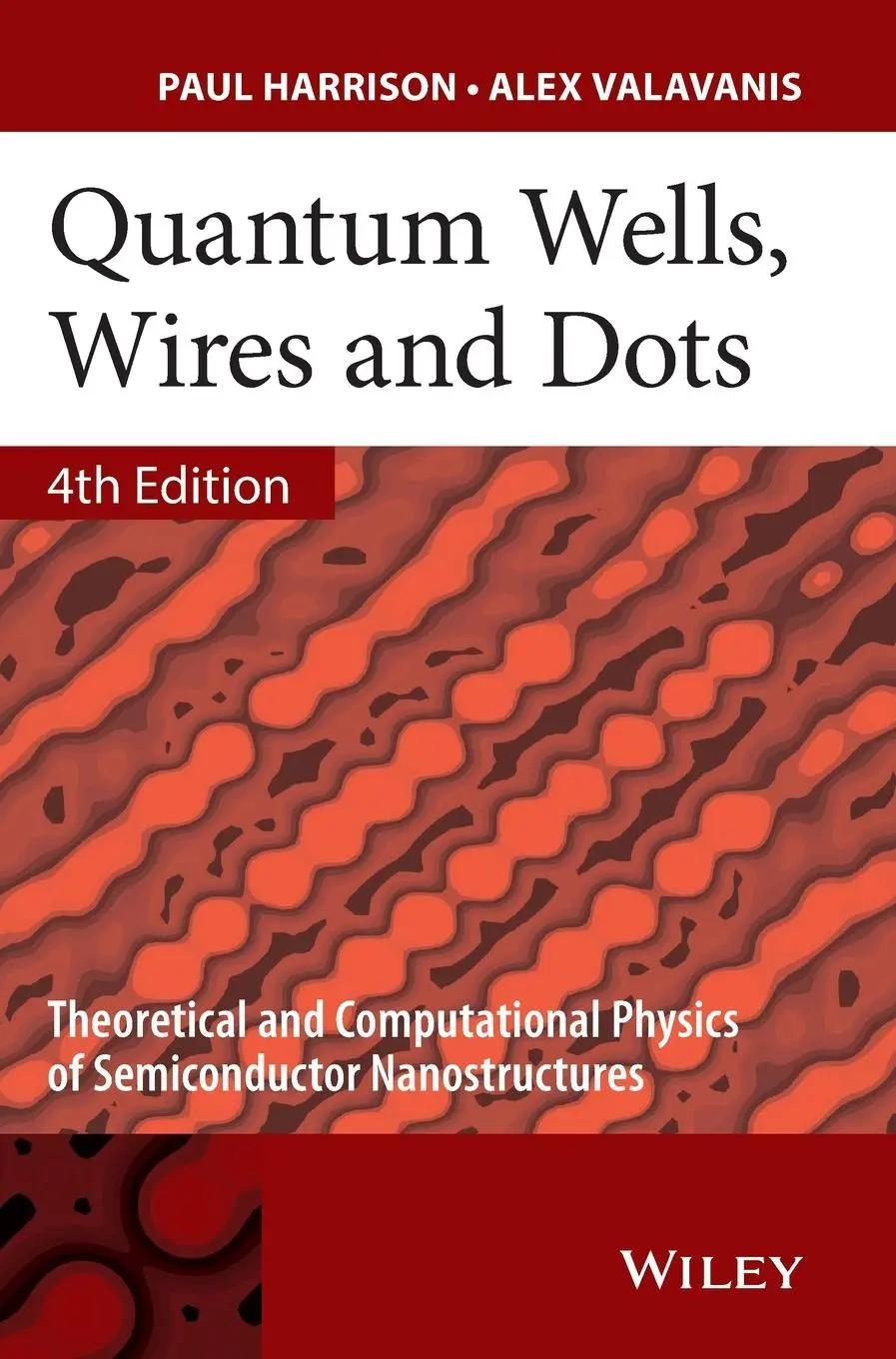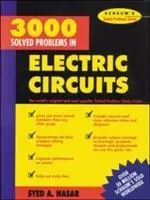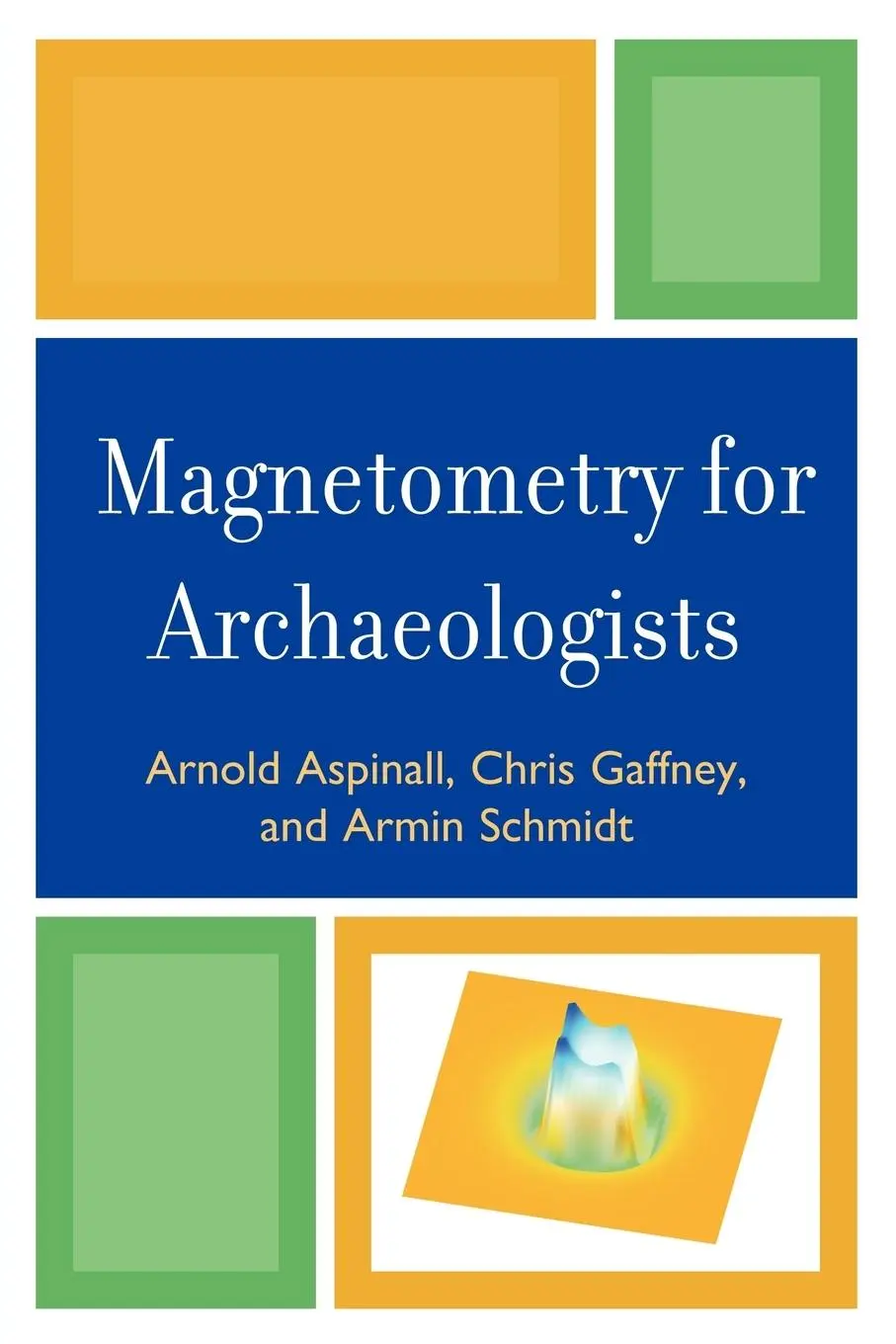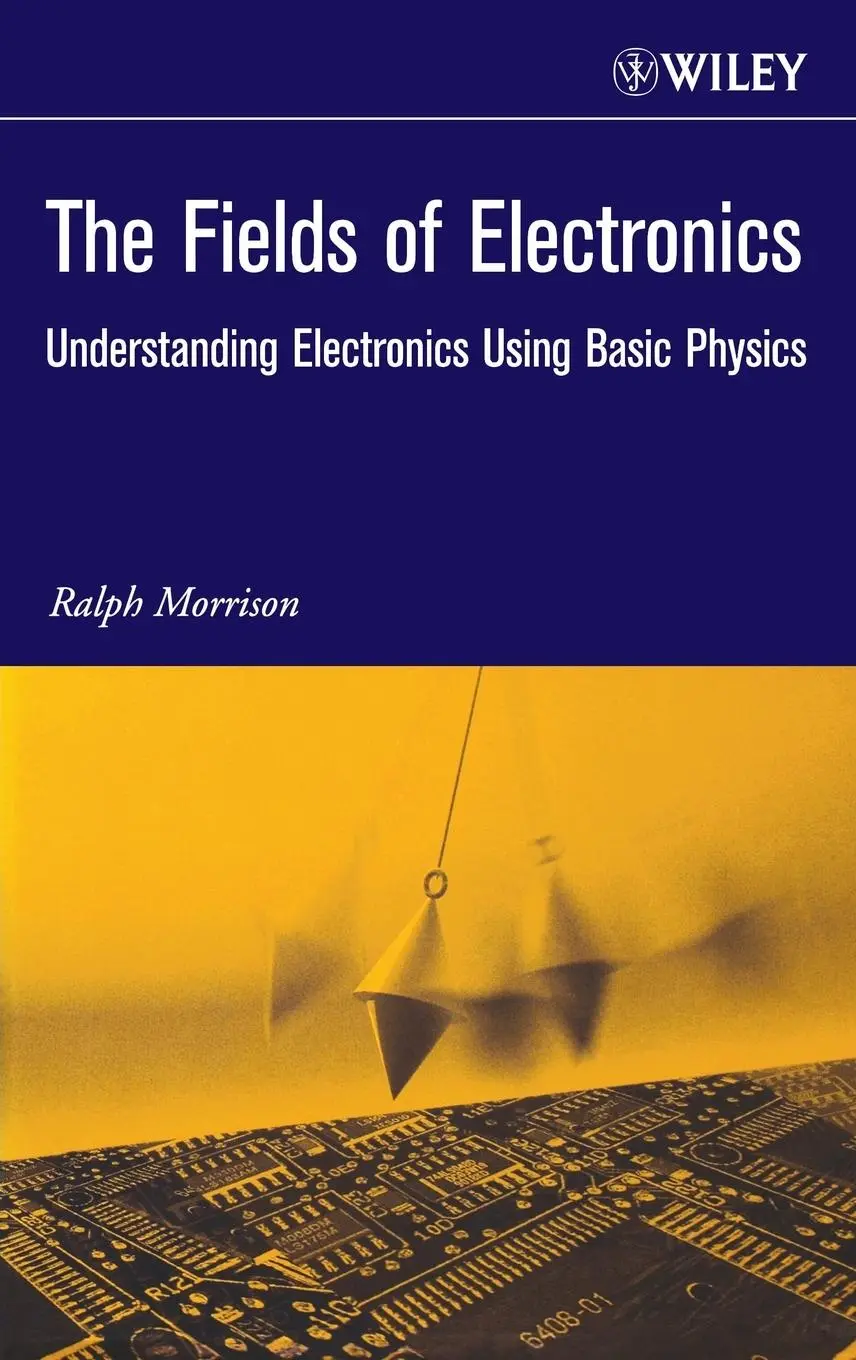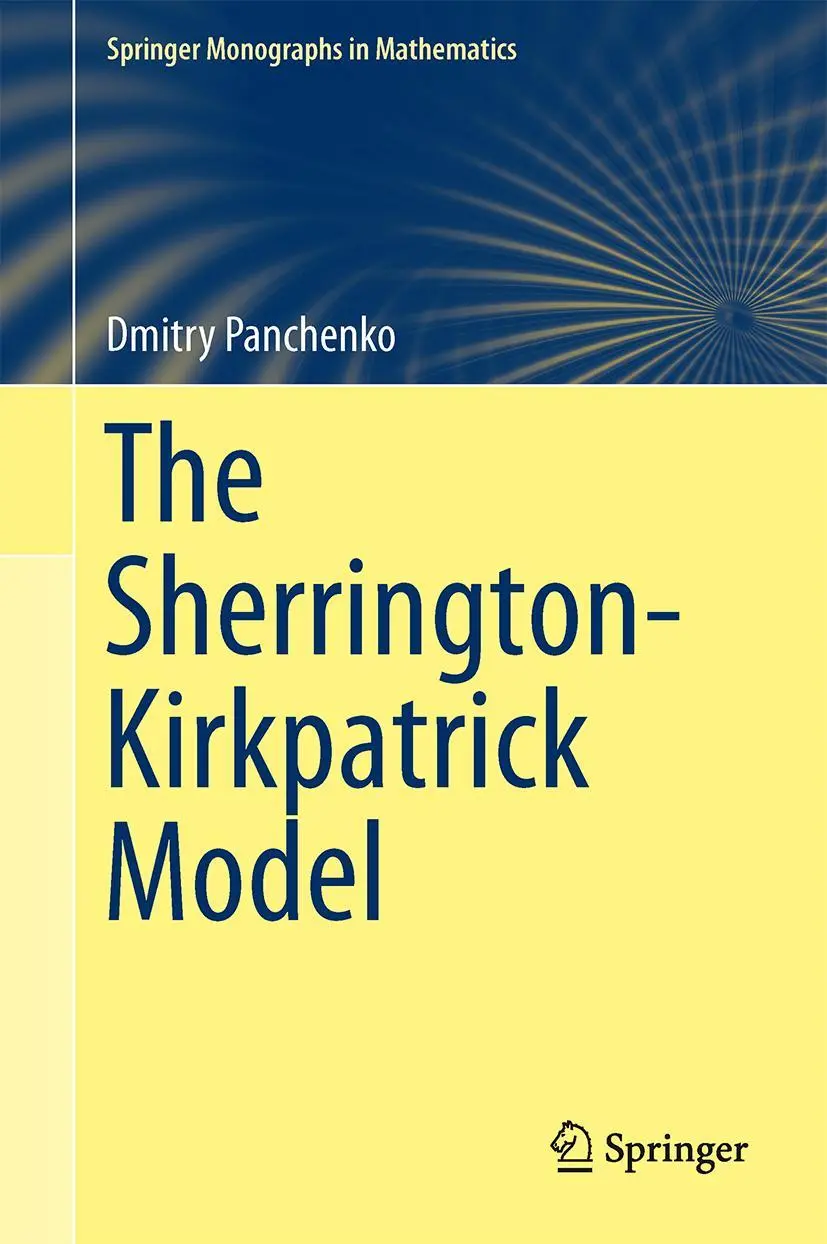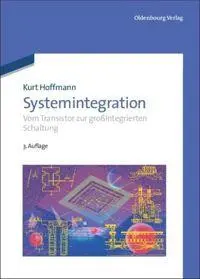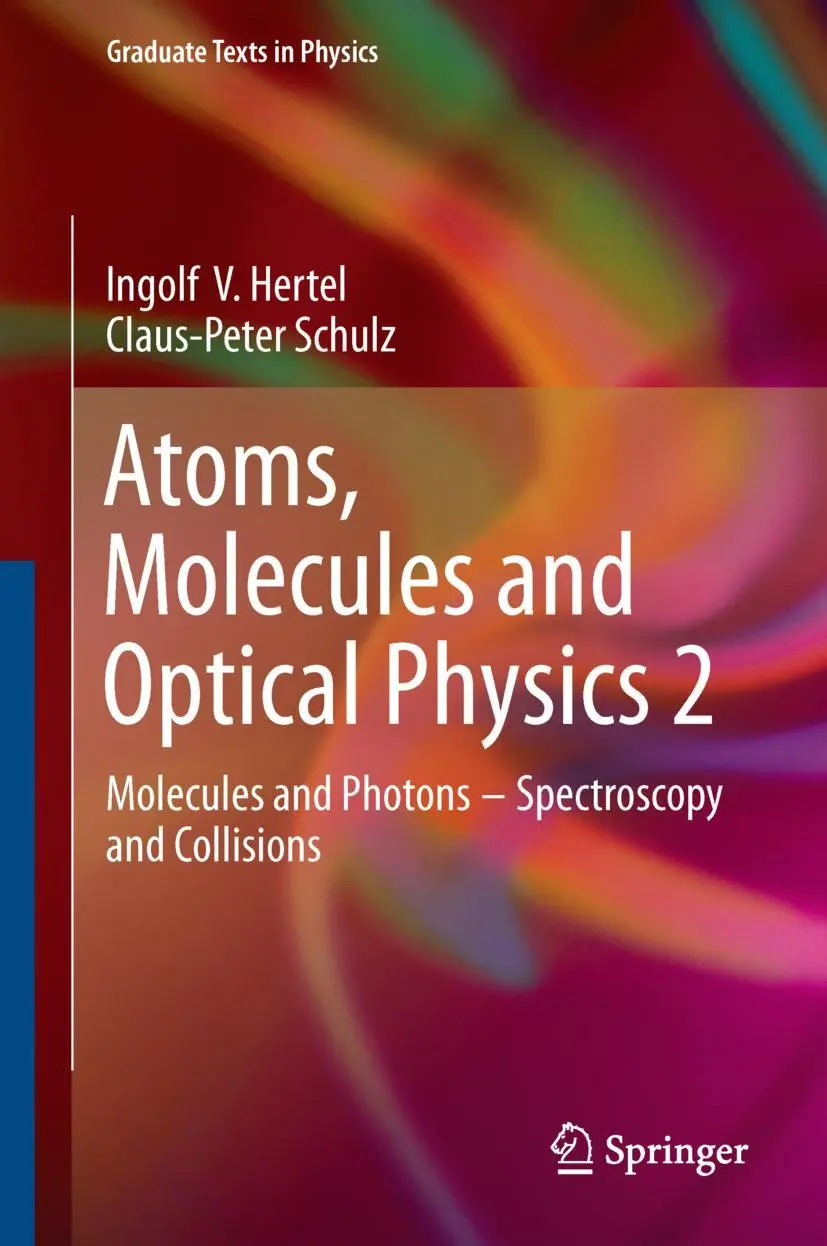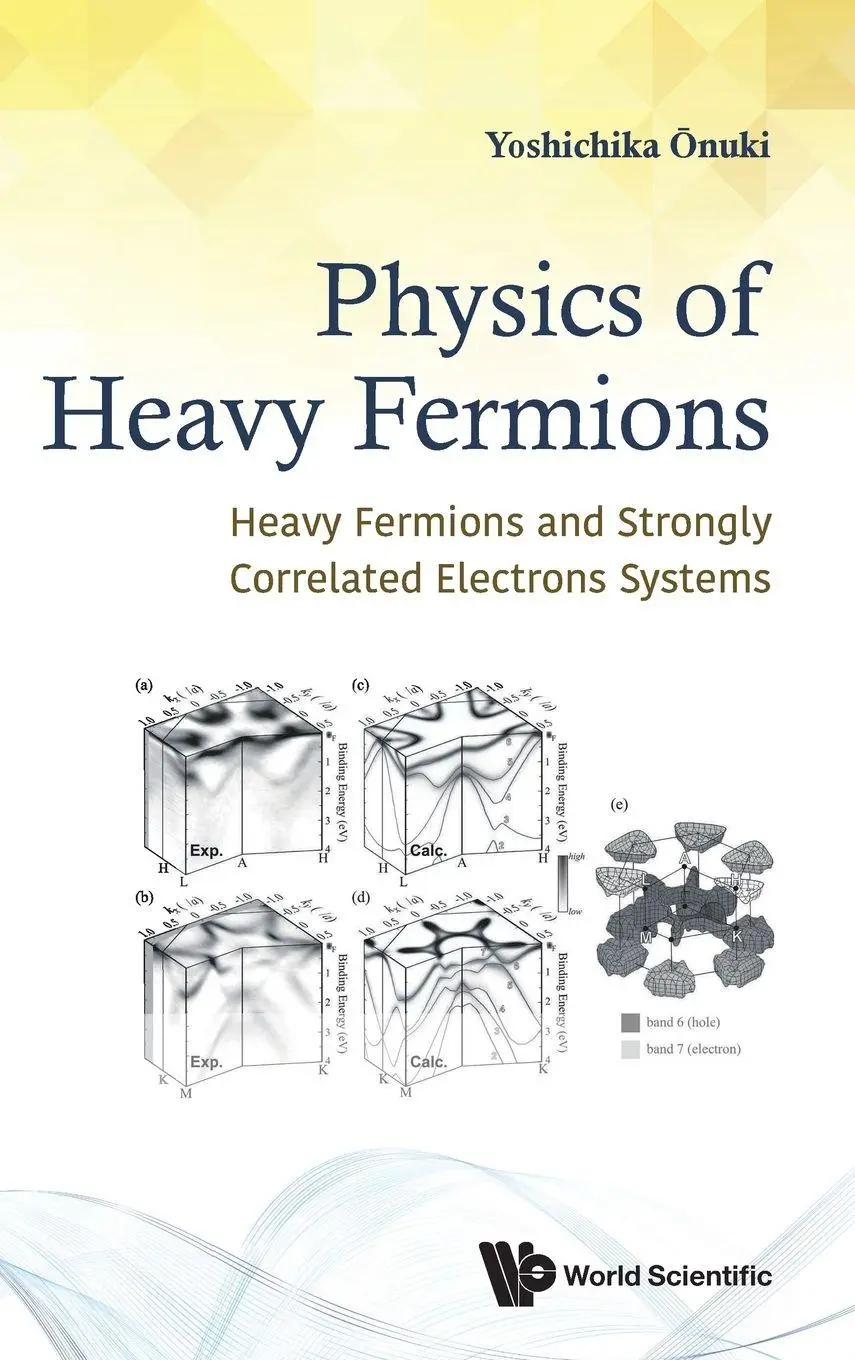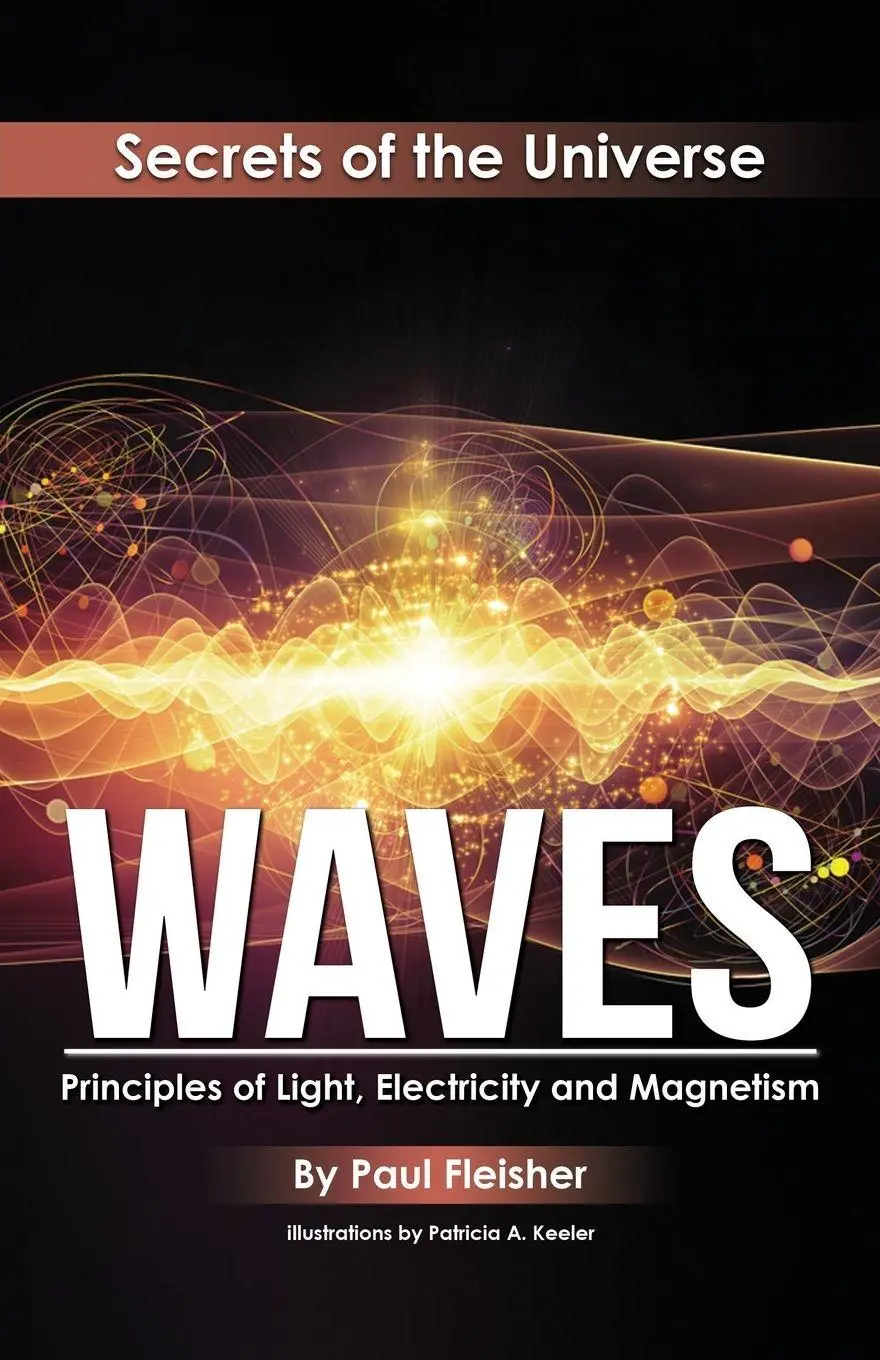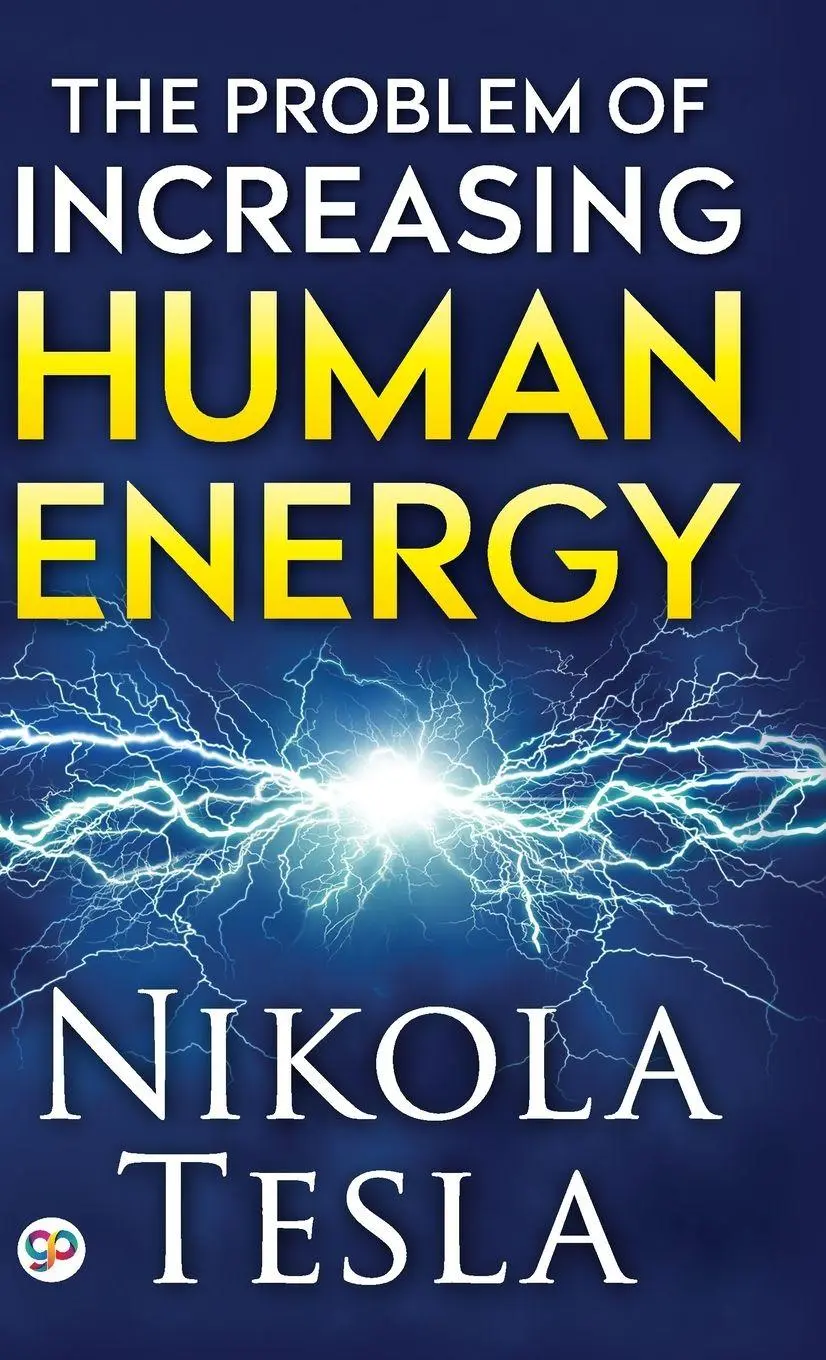Dekorationsartikel gehören nicht zum Leistungsumfang.
Sprache:
Englisch
65,90 €*
Versandkostenfrei per Post / DHL
Aktuell nicht verfügbar
Kategorien:
Beschreibung
Dedication iii
List of Contributors xiii
Preface xv
Acknowledgements xix
Introduction xxiii
References xxiv
1 Semiconductors and heterostructures 1
1.1 The mechanics of waves 1
1.2 Crystal structure 3
1.3 The effective mass approximation 5
1.4 Band theory 5
1.5 Heterojunctions 7
1.6 Heterostructures 7
1.7 The envelope function approximation 10
1.8 Band non-parabolicity 11
1.9 The reciprocal lattice 13
Exercises 16
References 17
2 Solutions to Schrödinger's equation 19
2.1 The infinite well 19
2.2 In-plane dispersion 22
2.3 Extension to include band non-parabolicity 24
2.4 Density of states 26
2.4.1 Density-of-states effective mass 28
2.4.2 Two-dimensional systems 29
2.5 Subband populations 31
2.5.1 Populations in non-parabolic subbands 33
2.5.2 Calculation of quasi-Fermi energy 35
2.6 Thermalised distributions 36
2.7 Finite well with constant mass 37
2.7.1 Unbound states 43
2.7.2 Effective mass mismatch at heterojunctions 45
2.7.3 The infinite barrier height and mass limits 49
2.8 Extension to multiple-well systems 50
2.9 The asymmetric single quantum well 53
2.10 Addition of an electric field 54
2.11 The infinite superlattice 57
2.12 The single barrier 63
2.13 The double barrier 65
2.14 Extension to include electric field 71
2.15 Magnetic fields and Landau quantisation 72
2.16 In summary 74
Exercises 74
References 76
3 Numerical solutions 79
3.1 Bisection root-finding 79
3.2 Newton-Raphson root finding 81
3.3 Numerical differentiation 83
3.4 Discretised Schrödinger equation 84
3.5 Shooting method 84
3.6 Generalized initial conditions 86
3.7 Practical implementation of the shooting method 88
3.8 Heterojunction boundary conditions 90
3.9 Matrix solutions of the discretised Schrödinger equation 91
3.10 The parabolic potential well 94
3.11 The Pöschl-Teller potential hole 98
3.12 Convergence tests 98
3.13 Extension to variable effective mass 99
3.14 The double quantum well 103
3.15 Multiple quantum wells and finite superlattices 104
3.16 Addition of electric field 106
3.17 Extension to include variable permittivity 106
3.18 Quantum confined Stark effect 108
3.19 Field-induced anti-crossings 108
3.20 Symmetry and selection rules 110
3.21 The Heisenberg uncertainty principle 110
3.22 Extension to include band non-parabolicity 113
3.23 Poisson's equation 114
3.24 Matrix solution of Poisson's equation 118
3.25 Self-consistent Schrödinger-Poisson solution 119
3.26 Modulation doping 121
3.27 The high-electron-mobility transistor 122
3.28 Band filling 123
Exercises 124
References 125
4 Diffusion 127
4.1 Introduction 127
4.2 Theory 129
4.3 Boundary conditions 130
4.4 Convergence tests 131
4.5 Numerical stability 133
4.6 Constant diffusion coefficients 133
4.7 Concentration dependent diffusion coefficient 135
4.8 Depth dependent diffusion coefficient 136
4.9 Time dependent diffusion coefficient 138
4.10 delta-doped quantum wells 138
4.11 Extension to higher dimensions 141
Exercises 142
References 142
5 Impurities 145
5.1 Donors and acceptors in bulk material 145
5.2 Binding energy in a heterostructure 147
5.3 Two-dimensional trial wave function 152
5.4 Three-dimensional trial wave function 158
5.5 Variable-symmetry trial wave function 164
5.6 Inclusion of a central cell correction 170
5.7 Special considerations for acceptors 171
5.8 Effective mass and dielectric mismatch 172
5.9 Band non-parabolicity 173
5.10 Excited states 173
5.11 Application to spin-flip Raman spectroscopy 174
5.11.1 Diluted magnetic semiconductors 174
5.11.2 Spin-flip Raman spectroscopy 176
5.12 Alternative approach to excited impurity states 178
5.13 The ground state 180
5.14 Position dependence 181
5.15 Excited states 181
5.16 Impurity occupancy statistics 184
Exercises 188
References 189
6 Excitons 191
6.1 Excitons in bulk 191
6.2 Excitons in heterostructures 193
6.3 Exciton binding energies 193
6.4 1s exciton 198
6.5 The two-dimensional and three-dimensional limits 202
6.6 Excitons in single quantum wells 206
6.7 Excitons in multiple quantum wells 208
6.8 Stark ladders 210
6.9 Self-consistent effects 211
6.10 2s exciton 212
Exercises 214
References 215
7 Strained quantum wells 217
7.1 Stress and strain in bulk crystals 217
7.2 Strain in quantum wells 221
7.3 Critical thickness of layers 224
7.4 Strain balancing 226
7.5 Effect on the band profile of quantum wells 228
7.6 The piezoelectric effect 231
7.7 Induced piezoelectric fields in quantum wells 234
7.8 Effect of piezoelectric fields on quantum wells 236
Exercises 239
References 240
8 Simple models of quantum wires and dots 241
8.1 Further confinement 241
8.2 Schrödinger's equation in quantum wires 243
8.3 Infinitely deep rectangular wires 245
8.4 Simple approximation to a finite rectangular wire 247
8.5 Circular cross-section wire 251
8.6 Quantum boxes 255
8.7 Spherical quantum dots 256
8.8 Non-zero angular momentum states 259
8.9 Approaches to pyramidal dots 262
8.10 Matrix approaches 263
8.11 Finite difference expansions 263
8.12 Density of states 265
Exercises 267
References 268
9 Quantum dots 269
9.1 0-dimensional systems and their experimental realization 269
9.2 Cuboidal dots 271
9.3 Dots of arbitrary shape 272
9.3.1 Convergence tests 277
9.3.2 Efficiency 279
9.3.3 Optimization 281
9.4 Application to real problems 282
9.4.1 InAs/GaAs self-assembled quantum dots 282
9.4.2 Working assumptions 282
9.4.3 Results 283
9.4.4 Concluding remarks 286
9.5 A more complex model is not always a better model 288
Exercises 289
References 290
10 Carrier scattering 293
10.1 Introduction 293
10.2 Fermi's Golden Rule 294
10.3 Extension to sinusoidal perturbations 296
10.4 Averaging over two-dimensional carrier distributions 296
10.5 Phonons 298
10.6 Longitudinal optic phonon scattering of two-dimensional carriers 301
10.7 Application to conduction subbands 313
10.8 Mean intersubband LO phonon scattering rate 315
10.9 Ratio of emission to absorption 316
10.10 Screening of the LO phonon interaction 318
10.11 Acoustic deformation potential scattering 319
10.12 Application to conduction subbands 324
10.13 Optical deformation potential scattering 326
10.14 Confined and interface phonon modes 328
10.15 Carrier-carrier scattering 328
10.16 Addition of screening 336
10.17 Mean intersubband carrier-carrier scattering rate 337
10.18 Computational implementation 339
10.19 Intrasubband versus intersubband 340
10.20 Thermalized distributions 341
10.21 Auger-type intersubband processes 342
10.22 Asymmetric intrasubband processes 343
10.23 Empirical relationships 344
10.24 A generalised expression for scattering of two-dimensional carriers 345
10.25 Impurity scattering 346
10.26 Alloy disorder scattering 351
10.27 Alloy disorder scattering in quantum wells 354
10.28 Interface roughness scattering 355
10.29 Interface roughness scattering in quantum wells 359
10.30 Carrier scattering in quantum wires and dots 362
Exercises 362
References 364
11 Optical properties of quantum wells 367
11.1 Carrier-photon scattering 367
11.2 Spontaneous emission lifetime 372
11.3 Intersubband absorption in quantum wells 374
11.4 Bound-bound transitions 376
11.5 Bound-free transitions 377
11.6 Rectangular quantum well 379
11.7 Intersubband optical non-linearities 382
11.8 Electric polarization 383
11.9 Intersubband second harmonic generation 384
11.10 Maximization of resonant susceptibility 387
Exercises 390
References 391
12 Carrier transport 393
12.1 Introduction 393
12.2 Quantum cascade lasers 393
12.3 Realistic quantum cascade laser 398
12.4 Rate equations 400
12.5 Self-consistent solution of the rate equations 402
12.6 Calculation of the current density 404
12.7 Phonon and carrier-carrier scattering transport 404
12.8 Electron temperature 405
12.9 Calculation of the gain 408
12.10 QCLs, QWIPs, QDIPs and other methods 411
12.11 Density matrix approaches 412
12.11.1 Time evolution of the density matrix 415
12.11.2 Density matrix modelling of terahertz QCLs 416
Exercises 418
References 420
13 Optical waveguides 423
13.1 Introduction to optical waveguides 423
13.2 Optical waveguide analysis 425
13.2.1 The wave equation 425
13.2.2 The transfer matrix method 428
13.2.3 Guided modes in multi-layer waveguides 431
13.3 Optical properties of materials 434
13.3.1 Semiconductors 434
13.3.2 Influence of free-carriers 436
13.3.3 Carrier mobility model 438
13.3.4 Influence of doping 439
13.4 Application to waveguides of...
List of Contributors xiii
Preface xv
Acknowledgements xix
Introduction xxiii
References xxiv
1 Semiconductors and heterostructures 1
1.1 The mechanics of waves 1
1.2 Crystal structure 3
1.3 The effective mass approximation 5
1.4 Band theory 5
1.5 Heterojunctions 7
1.6 Heterostructures 7
1.7 The envelope function approximation 10
1.8 Band non-parabolicity 11
1.9 The reciprocal lattice 13
Exercises 16
References 17
2 Solutions to Schrödinger's equation 19
2.1 The infinite well 19
2.2 In-plane dispersion 22
2.3 Extension to include band non-parabolicity 24
2.4 Density of states 26
2.4.1 Density-of-states effective mass 28
2.4.2 Two-dimensional systems 29
2.5 Subband populations 31
2.5.1 Populations in non-parabolic subbands 33
2.5.2 Calculation of quasi-Fermi energy 35
2.6 Thermalised distributions 36
2.7 Finite well with constant mass 37
2.7.1 Unbound states 43
2.7.2 Effective mass mismatch at heterojunctions 45
2.7.3 The infinite barrier height and mass limits 49
2.8 Extension to multiple-well systems 50
2.9 The asymmetric single quantum well 53
2.10 Addition of an electric field 54
2.11 The infinite superlattice 57
2.12 The single barrier 63
2.13 The double barrier 65
2.14 Extension to include electric field 71
2.15 Magnetic fields and Landau quantisation 72
2.16 In summary 74
Exercises 74
References 76
3 Numerical solutions 79
3.1 Bisection root-finding 79
3.2 Newton-Raphson root finding 81
3.3 Numerical differentiation 83
3.4 Discretised Schrödinger equation 84
3.5 Shooting method 84
3.6 Generalized initial conditions 86
3.7 Practical implementation of the shooting method 88
3.8 Heterojunction boundary conditions 90
3.9 Matrix solutions of the discretised Schrödinger equation 91
3.10 The parabolic potential well 94
3.11 The Pöschl-Teller potential hole 98
3.12 Convergence tests 98
3.13 Extension to variable effective mass 99
3.14 The double quantum well 103
3.15 Multiple quantum wells and finite superlattices 104
3.16 Addition of electric field 106
3.17 Extension to include variable permittivity 106
3.18 Quantum confined Stark effect 108
3.19 Field-induced anti-crossings 108
3.20 Symmetry and selection rules 110
3.21 The Heisenberg uncertainty principle 110
3.22 Extension to include band non-parabolicity 113
3.23 Poisson's equation 114
3.24 Matrix solution of Poisson's equation 118
3.25 Self-consistent Schrödinger-Poisson solution 119
3.26 Modulation doping 121
3.27 The high-electron-mobility transistor 122
3.28 Band filling 123
Exercises 124
References 125
4 Diffusion 127
4.1 Introduction 127
4.2 Theory 129
4.3 Boundary conditions 130
4.4 Convergence tests 131
4.5 Numerical stability 133
4.6 Constant diffusion coefficients 133
4.7 Concentration dependent diffusion coefficient 135
4.8 Depth dependent diffusion coefficient 136
4.9 Time dependent diffusion coefficient 138
4.10 delta-doped quantum wells 138
4.11 Extension to higher dimensions 141
Exercises 142
References 142
5 Impurities 145
5.1 Donors and acceptors in bulk material 145
5.2 Binding energy in a heterostructure 147
5.3 Two-dimensional trial wave function 152
5.4 Three-dimensional trial wave function 158
5.5 Variable-symmetry trial wave function 164
5.6 Inclusion of a central cell correction 170
5.7 Special considerations for acceptors 171
5.8 Effective mass and dielectric mismatch 172
5.9 Band non-parabolicity 173
5.10 Excited states 173
5.11 Application to spin-flip Raman spectroscopy 174
5.11.1 Diluted magnetic semiconductors 174
5.11.2 Spin-flip Raman spectroscopy 176
5.12 Alternative approach to excited impurity states 178
5.13 The ground state 180
5.14 Position dependence 181
5.15 Excited states 181
5.16 Impurity occupancy statistics 184
Exercises 188
References 189
6 Excitons 191
6.1 Excitons in bulk 191
6.2 Excitons in heterostructures 193
6.3 Exciton binding energies 193
6.4 1s exciton 198
6.5 The two-dimensional and three-dimensional limits 202
6.6 Excitons in single quantum wells 206
6.7 Excitons in multiple quantum wells 208
6.8 Stark ladders 210
6.9 Self-consistent effects 211
6.10 2s exciton 212
Exercises 214
References 215
7 Strained quantum wells 217
7.1 Stress and strain in bulk crystals 217
7.2 Strain in quantum wells 221
7.3 Critical thickness of layers 224
7.4 Strain balancing 226
7.5 Effect on the band profile of quantum wells 228
7.6 The piezoelectric effect 231
7.7 Induced piezoelectric fields in quantum wells 234
7.8 Effect of piezoelectric fields on quantum wells 236
Exercises 239
References 240
8 Simple models of quantum wires and dots 241
8.1 Further confinement 241
8.2 Schrödinger's equation in quantum wires 243
8.3 Infinitely deep rectangular wires 245
8.4 Simple approximation to a finite rectangular wire 247
8.5 Circular cross-section wire 251
8.6 Quantum boxes 255
8.7 Spherical quantum dots 256
8.8 Non-zero angular momentum states 259
8.9 Approaches to pyramidal dots 262
8.10 Matrix approaches 263
8.11 Finite difference expansions 263
8.12 Density of states 265
Exercises 267
References 268
9 Quantum dots 269
9.1 0-dimensional systems and their experimental realization 269
9.2 Cuboidal dots 271
9.3 Dots of arbitrary shape 272
9.3.1 Convergence tests 277
9.3.2 Efficiency 279
9.3.3 Optimization 281
9.4 Application to real problems 282
9.4.1 InAs/GaAs self-assembled quantum dots 282
9.4.2 Working assumptions 282
9.4.3 Results 283
9.4.4 Concluding remarks 286
9.5 A more complex model is not always a better model 288
Exercises 289
References 290
10 Carrier scattering 293
10.1 Introduction 293
10.2 Fermi's Golden Rule 294
10.3 Extension to sinusoidal perturbations 296
10.4 Averaging over two-dimensional carrier distributions 296
10.5 Phonons 298
10.6 Longitudinal optic phonon scattering of two-dimensional carriers 301
10.7 Application to conduction subbands 313
10.8 Mean intersubband LO phonon scattering rate 315
10.9 Ratio of emission to absorption 316
10.10 Screening of the LO phonon interaction 318
10.11 Acoustic deformation potential scattering 319
10.12 Application to conduction subbands 324
10.13 Optical deformation potential scattering 326
10.14 Confined and interface phonon modes 328
10.15 Carrier-carrier scattering 328
10.16 Addition of screening 336
10.17 Mean intersubband carrier-carrier scattering rate 337
10.18 Computational implementation 339
10.19 Intrasubband versus intersubband 340
10.20 Thermalized distributions 341
10.21 Auger-type intersubband processes 342
10.22 Asymmetric intrasubband processes 343
10.23 Empirical relationships 344
10.24 A generalised expression for scattering of two-dimensional carriers 345
10.25 Impurity scattering 346
10.26 Alloy disorder scattering 351
10.27 Alloy disorder scattering in quantum wells 354
10.28 Interface roughness scattering 355
10.29 Interface roughness scattering in quantum wells 359
10.30 Carrier scattering in quantum wires and dots 362
Exercises 362
References 364
11 Optical properties of quantum wells 367
11.1 Carrier-photon scattering 367
11.2 Spontaneous emission lifetime 372
11.3 Intersubband absorption in quantum wells 374
11.4 Bound-bound transitions 376
11.5 Bound-free transitions 377
11.6 Rectangular quantum well 379
11.7 Intersubband optical non-linearities 382
11.8 Electric polarization 383
11.9 Intersubband second harmonic generation 384
11.10 Maximization of resonant susceptibility 387
Exercises 390
References 391
12 Carrier transport 393
12.1 Introduction 393
12.2 Quantum cascade lasers 393
12.3 Realistic quantum cascade laser 398
12.4 Rate equations 400
12.5 Self-consistent solution of the rate equations 402
12.6 Calculation of the current density 404
12.7 Phonon and carrier-carrier scattering transport 404
12.8 Electron temperature 405
12.9 Calculation of the gain 408
12.10 QCLs, QWIPs, QDIPs and other methods 411
12.11 Density matrix approaches 412
12.11.1 Time evolution of the density matrix 415
12.11.2 Density matrix modelling of terahertz QCLs 416
Exercises 418
References 420
13 Optical waveguides 423
13.1 Introduction to optical waveguides 423
13.2 Optical waveguide analysis 425
13.2.1 The wave equation 425
13.2.2 The transfer matrix method 428
13.2.3 Guided modes in multi-layer waveguides 431
13.3 Optical properties of materials 434
13.3.1 Semiconductors 434
13.3.2 Influence of free-carriers 436
13.3.3 Carrier mobility model 438
13.3.4 Influence of doping 439
13.4 Application to waveguides of...
Dedication iii
List of Contributors xiii
Preface xv
Acknowledgements xix
Introduction xxiii
References xxiv
1 Semiconductors and heterostructures 1
1.1 The mechanics of waves 1
1.2 Crystal structure 3
1.3 The effective mass approximation 5
1.4 Band theory 5
1.5 Heterojunctions 7
1.6 Heterostructures 7
1.7 The envelope function approximation 10
1.8 Band non-parabolicity 11
1.9 The reciprocal lattice 13
Exercises 16
References 17
2 Solutions to Schrödinger's equation 19
2.1 The infinite well 19
2.2 In-plane dispersion 22
2.3 Extension to include band non-parabolicity 24
2.4 Density of states 26
2.4.1 Density-of-states effective mass 28
2.4.2 Two-dimensional systems 29
2.5 Subband populations 31
2.5.1 Populations in non-parabolic subbands 33
2.5.2 Calculation of quasi-Fermi energy 35
2.6 Thermalised distributions 36
2.7 Finite well with constant mass 37
2.7.1 Unbound states 43
2.7.2 Effective mass mismatch at heterojunctions 45
2.7.3 The infinite barrier height and mass limits 49
2.8 Extension to multiple-well systems 50
2.9 The asymmetric single quantum well 53
2.10 Addition of an electric field 54
2.11 The infinite superlattice 57
2.12 The single barrier 63
2.13 The double barrier 65
2.14 Extension to include electric field 71
2.15 Magnetic fields and Landau quantisation 72
2.16 In summary 74
Exercises 74
References 76
3 Numerical solutions 79
3.1 Bisection root-finding 79
3.2 Newton-Raphson root finding 81
3.3 Numerical differentiation 83
3.4 Discretised Schrödinger equation 84
3.5 Shooting method 84
3.6 Generalized initial conditions 86
3.7 Practical implementation of the shooting method 88
3.8 Heterojunction boundary conditions 90
3.9 Matrix solutions of the discretised Schrödinger equation 91
3.10 The parabolic potential well 94
3.11 The Pöschl-Teller potential hole 98
3.12 Convergence tests 98
3.13 Extension to variable effective mass 99
3.14 The double quantum well 103
3.15 Multiple quantum wells and finite superlattices 104
3.16 Addition of electric field 106
3.17 Extension to include variable permittivity 106
3.18 Quantum confined Stark effect 108
3.19 Field-induced anti-crossings 108
3.20 Symmetry and selection rules 110
3.21 The Heisenberg uncertainty principle 110
3.22 Extension to include band non-parabolicity 113
3.23 Poisson's equation 114
3.24 Matrix solution of Poisson's equation 118
3.25 Self-consistent Schrödinger-Poisson solution 119
3.26 Modulation doping 121
3.27 The high-electron-mobility transistor 122
3.28 Band filling 123
Exercises 124
References 125
4 Diffusion 127
4.1 Introduction 127
4.2 Theory 129
4.3 Boundary conditions 130
4.4 Convergence tests 131
4.5 Numerical stability 133
4.6 Constant diffusion coefficients 133
4.7 Concentration dependent diffusion coefficient 135
4.8 Depth dependent diffusion coefficient 136
4.9 Time dependent diffusion coefficient 138
4.10 delta-doped quantum wells 138
4.11 Extension to higher dimensions 141
Exercises 142
References 142
5 Impurities 145
5.1 Donors and acceptors in bulk material 145
5.2 Binding energy in a heterostructure 147
5.3 Two-dimensional trial wave function 152
5.4 Three-dimensional trial wave function 158
5.5 Variable-symmetry trial wave function 164
5.6 Inclusion of a central cell correction 170
5.7 Special considerations for acceptors 171
5.8 Effective mass and dielectric mismatch 172
5.9 Band non-parabolicity 173
5.10 Excited states 173
5.11 Application to spin-flip Raman spectroscopy 174
5.11.1 Diluted magnetic semiconductors 174
5.11.2 Spin-flip Raman spectroscopy 176
5.12 Alternative approach to excited impurity states 178
5.13 The ground state 180
5.14 Position dependence 181
5.15 Excited states 181
5.16 Impurity occupancy statistics 184
Exercises 188
References 189
6 Excitons 191
6.1 Excitons in bulk 191
6.2 Excitons in heterostructures 193
6.3 Exciton binding energies 193
6.4 1s exciton 198
6.5 The two-dimensional and three-dimensional limits 202
6.6 Excitons in single quantum wells 206
6.7 Excitons in multiple quantum wells 208
6.8 Stark ladders 210
6.9 Self-consistent effects 211
6.10 2s exciton 212
Exercises 214
References 215
7 Strained quantum wells 217
7.1 Stress and strain in bulk crystals 217
7.2 Strain in quantum wells 221
7.3 Critical thickness of layers 224
7.4 Strain balancing 226
7.5 Effect on the band profile of quantum wells 228
7.6 The piezoelectric effect 231
7.7 Induced piezoelectric fields in quantum wells 234
7.8 Effect of piezoelectric fields on quantum wells 236
Exercises 239
References 240
8 Simple models of quantum wires and dots 241
8.1 Further confinement 241
8.2 Schrödinger's equation in quantum wires 243
8.3 Infinitely deep rectangular wires 245
8.4 Simple approximation to a finite rectangular wire 247
8.5 Circular cross-section wire 251
8.6 Quantum boxes 255
8.7 Spherical quantum dots 256
8.8 Non-zero angular momentum states 259
8.9 Approaches to pyramidal dots 262
8.10 Matrix approaches 263
8.11 Finite difference expansions 263
8.12 Density of states 265
Exercises 267
References 268
9 Quantum dots 269
9.1 0-dimensional systems and their experimental realization 269
9.2 Cuboidal dots 271
9.3 Dots of arbitrary shape 272
9.3.1 Convergence tests 277
9.3.2 Efficiency 279
9.3.3 Optimization 281
9.4 Application to real problems 282
9.4.1 InAs/GaAs self-assembled quantum dots 282
9.4.2 Working assumptions 282
9.4.3 Results 283
9.4.4 Concluding remarks 286
9.5 A more complex model is not always a better model 288
Exercises 289
References 290
10 Carrier scattering 293
10.1 Introduction 293
10.2 Fermi's Golden Rule 294
10.3 Extension to sinusoidal perturbations 296
10.4 Averaging over two-dimensional carrier distributions 296
10.5 Phonons 298
10.6 Longitudinal optic phonon scattering of two-dimensional carriers 301
10.7 Application to conduction subbands 313
10.8 Mean intersubband LO phonon scattering rate 315
10.9 Ratio of emission to absorption 316
10.10 Screening of the LO phonon interaction 318
10.11 Acoustic deformation potential scattering 319
10.12 Application to conduction subbands 324
10.13 Optical deformation potential scattering 326
10.14 Confined and interface phonon modes 328
10.15 Carrier-carrier scattering 328
10.16 Addition of screening 336
10.17 Mean intersubband carrier-carrier scattering rate 337
10.18 Computational implementation 339
10.19 Intrasubband versus intersubband 340
10.20 Thermalized distributions 341
10.21 Auger-type intersubband processes 342
10.22 Asymmetric intrasubband processes 343
10.23 Empirical relationships 344
10.24 A generalised expression for scattering of two-dimensional carriers 345
10.25 Impurity scattering 346
10.26 Alloy disorder scattering 351
10.27 Alloy disorder scattering in quantum wells 354
10.28 Interface roughness scattering 355
10.29 Interface roughness scattering in quantum wells 359
10.30 Carrier scattering in quantum wires and dots 362
Exercises 362
References 364
11 Optical properties of quantum wells 367
11.1 Carrier-photon scattering 367
11.2 Spontaneous emission lifetime 372
11.3 Intersubband absorption in quantum wells 374
11.4 Bound-bound transitions 376
11.5 Bound-free transitions 377
11.6 Rectangular quantum well 379
11.7 Intersubband optical non-linearities 382
11.8 Electric polarization 383
11.9 Intersubband second harmonic generation 384
11.10 Maximization of resonant susceptibility 387
Exercises 390
References 391
12 Carrier transport 393
12.1 Introduction 393
12.2 Quantum cascade lasers 393
12.3 Realistic quantum cascade laser 398
12.4 Rate equations 400
12.5 Self-consistent solution of the rate equations 402
12.6 Calculation of the current density 404
12.7 Phonon and carrier-carrier scattering transport 404
12.8 Electron temperature 405
12.9 Calculation of the gain 408
12.10 QCLs, QWIPs, QDIPs and other methods 411
12.11 Density matrix approaches 412
12.11.1 Time evolution of the density matrix 415
12.11.2 Density matrix modelling of terahertz QCLs 416
Exercises 418
References 420
13 Optical waveguides 423
13.1 Introduction to optical waveguides 423
13.2 Optical waveguide analysis 425
13.2.1 The wave equation 425
13.2.2 The transfer matrix method 428
13.2.3 Guided modes in multi-layer waveguides 431
13.3 Optical properties of materials 434
13.3.1 Semiconductors 434
13.3.2 Influence of free-carriers 436
13.3.3 Carrier mobility model 438
13.3.4 Influence of doping 439
13.4 Application to waveguides of...
List of Contributors xiii
Preface xv
Acknowledgements xix
Introduction xxiii
References xxiv
1 Semiconductors and heterostructures 1
1.1 The mechanics of waves 1
1.2 Crystal structure 3
1.3 The effective mass approximation 5
1.4 Band theory 5
1.5 Heterojunctions 7
1.6 Heterostructures 7
1.7 The envelope function approximation 10
1.8 Band non-parabolicity 11
1.9 The reciprocal lattice 13
Exercises 16
References 17
2 Solutions to Schrödinger's equation 19
2.1 The infinite well 19
2.2 In-plane dispersion 22
2.3 Extension to include band non-parabolicity 24
2.4 Density of states 26
2.4.1 Density-of-states effective mass 28
2.4.2 Two-dimensional systems 29
2.5 Subband populations 31
2.5.1 Populations in non-parabolic subbands 33
2.5.2 Calculation of quasi-Fermi energy 35
2.6 Thermalised distributions 36
2.7 Finite well with constant mass 37
2.7.1 Unbound states 43
2.7.2 Effective mass mismatch at heterojunctions 45
2.7.3 The infinite barrier height and mass limits 49
2.8 Extension to multiple-well systems 50
2.9 The asymmetric single quantum well 53
2.10 Addition of an electric field 54
2.11 The infinite superlattice 57
2.12 The single barrier 63
2.13 The double barrier 65
2.14 Extension to include electric field 71
2.15 Magnetic fields and Landau quantisation 72
2.16 In summary 74
Exercises 74
References 76
3 Numerical solutions 79
3.1 Bisection root-finding 79
3.2 Newton-Raphson root finding 81
3.3 Numerical differentiation 83
3.4 Discretised Schrödinger equation 84
3.5 Shooting method 84
3.6 Generalized initial conditions 86
3.7 Practical implementation of the shooting method 88
3.8 Heterojunction boundary conditions 90
3.9 Matrix solutions of the discretised Schrödinger equation 91
3.10 The parabolic potential well 94
3.11 The Pöschl-Teller potential hole 98
3.12 Convergence tests 98
3.13 Extension to variable effective mass 99
3.14 The double quantum well 103
3.15 Multiple quantum wells and finite superlattices 104
3.16 Addition of electric field 106
3.17 Extension to include variable permittivity 106
3.18 Quantum confined Stark effect 108
3.19 Field-induced anti-crossings 108
3.20 Symmetry and selection rules 110
3.21 The Heisenberg uncertainty principle 110
3.22 Extension to include band non-parabolicity 113
3.23 Poisson's equation 114
3.24 Matrix solution of Poisson's equation 118
3.25 Self-consistent Schrödinger-Poisson solution 119
3.26 Modulation doping 121
3.27 The high-electron-mobility transistor 122
3.28 Band filling 123
Exercises 124
References 125
4 Diffusion 127
4.1 Introduction 127
4.2 Theory 129
4.3 Boundary conditions 130
4.4 Convergence tests 131
4.5 Numerical stability 133
4.6 Constant diffusion coefficients 133
4.7 Concentration dependent diffusion coefficient 135
4.8 Depth dependent diffusion coefficient 136
4.9 Time dependent diffusion coefficient 138
4.10 delta-doped quantum wells 138
4.11 Extension to higher dimensions 141
Exercises 142
References 142
5 Impurities 145
5.1 Donors and acceptors in bulk material 145
5.2 Binding energy in a heterostructure 147
5.3 Two-dimensional trial wave function 152
5.4 Three-dimensional trial wave function 158
5.5 Variable-symmetry trial wave function 164
5.6 Inclusion of a central cell correction 170
5.7 Special considerations for acceptors 171
5.8 Effective mass and dielectric mismatch 172
5.9 Band non-parabolicity 173
5.10 Excited states 173
5.11 Application to spin-flip Raman spectroscopy 174
5.11.1 Diluted magnetic semiconductors 174
5.11.2 Spin-flip Raman spectroscopy 176
5.12 Alternative approach to excited impurity states 178
5.13 The ground state 180
5.14 Position dependence 181
5.15 Excited states 181
5.16 Impurity occupancy statistics 184
Exercises 188
References 189
6 Excitons 191
6.1 Excitons in bulk 191
6.2 Excitons in heterostructures 193
6.3 Exciton binding energies 193
6.4 1s exciton 198
6.5 The two-dimensional and three-dimensional limits 202
6.6 Excitons in single quantum wells 206
6.7 Excitons in multiple quantum wells 208
6.8 Stark ladders 210
6.9 Self-consistent effects 211
6.10 2s exciton 212
Exercises 214
References 215
7 Strained quantum wells 217
7.1 Stress and strain in bulk crystals 217
7.2 Strain in quantum wells 221
7.3 Critical thickness of layers 224
7.4 Strain balancing 226
7.5 Effect on the band profile of quantum wells 228
7.6 The piezoelectric effect 231
7.7 Induced piezoelectric fields in quantum wells 234
7.8 Effect of piezoelectric fields on quantum wells 236
Exercises 239
References 240
8 Simple models of quantum wires and dots 241
8.1 Further confinement 241
8.2 Schrödinger's equation in quantum wires 243
8.3 Infinitely deep rectangular wires 245
8.4 Simple approximation to a finite rectangular wire 247
8.5 Circular cross-section wire 251
8.6 Quantum boxes 255
8.7 Spherical quantum dots 256
8.8 Non-zero angular momentum states 259
8.9 Approaches to pyramidal dots 262
8.10 Matrix approaches 263
8.11 Finite difference expansions 263
8.12 Density of states 265
Exercises 267
References 268
9 Quantum dots 269
9.1 0-dimensional systems and their experimental realization 269
9.2 Cuboidal dots 271
9.3 Dots of arbitrary shape 272
9.3.1 Convergence tests 277
9.3.2 Efficiency 279
9.3.3 Optimization 281
9.4 Application to real problems 282
9.4.1 InAs/GaAs self-assembled quantum dots 282
9.4.2 Working assumptions 282
9.4.3 Results 283
9.4.4 Concluding remarks 286
9.5 A more complex model is not always a better model 288
Exercises 289
References 290
10 Carrier scattering 293
10.1 Introduction 293
10.2 Fermi's Golden Rule 294
10.3 Extension to sinusoidal perturbations 296
10.4 Averaging over two-dimensional carrier distributions 296
10.5 Phonons 298
10.6 Longitudinal optic phonon scattering of two-dimensional carriers 301
10.7 Application to conduction subbands 313
10.8 Mean intersubband LO phonon scattering rate 315
10.9 Ratio of emission to absorption 316
10.10 Screening of the LO phonon interaction 318
10.11 Acoustic deformation potential scattering 319
10.12 Application to conduction subbands 324
10.13 Optical deformation potential scattering 326
10.14 Confined and interface phonon modes 328
10.15 Carrier-carrier scattering 328
10.16 Addition of screening 336
10.17 Mean intersubband carrier-carrier scattering rate 337
10.18 Computational implementation 339
10.19 Intrasubband versus intersubband 340
10.20 Thermalized distributions 341
10.21 Auger-type intersubband processes 342
10.22 Asymmetric intrasubband processes 343
10.23 Empirical relationships 344
10.24 A generalised expression for scattering of two-dimensional carriers 345
10.25 Impurity scattering 346
10.26 Alloy disorder scattering 351
10.27 Alloy disorder scattering in quantum wells 354
10.28 Interface roughness scattering 355
10.29 Interface roughness scattering in quantum wells 359
10.30 Carrier scattering in quantum wires and dots 362
Exercises 362
References 364
11 Optical properties of quantum wells 367
11.1 Carrier-photon scattering 367
11.2 Spontaneous emission lifetime 372
11.3 Intersubband absorption in quantum wells 374
11.4 Bound-bound transitions 376
11.5 Bound-free transitions 377
11.6 Rectangular quantum well 379
11.7 Intersubband optical non-linearities 382
11.8 Electric polarization 383
11.9 Intersubband second harmonic generation 384
11.10 Maximization of resonant susceptibility 387
Exercises 390
References 391
12 Carrier transport 393
12.1 Introduction 393
12.2 Quantum cascade lasers 393
12.3 Realistic quantum cascade laser 398
12.4 Rate equations 400
12.5 Self-consistent solution of the rate equations 402
12.6 Calculation of the current density 404
12.7 Phonon and carrier-carrier scattering transport 404
12.8 Electron temperature 405
12.9 Calculation of the gain 408
12.10 QCLs, QWIPs, QDIPs and other methods 411
12.11 Density matrix approaches 412
12.11.1 Time evolution of the density matrix 415
12.11.2 Density matrix modelling of terahertz QCLs 416
Exercises 418
References 420
13 Optical waveguides 423
13.1 Introduction to optical waveguides 423
13.2 Optical waveguide analysis 425
13.2.1 The wave equation 425
13.2.2 The transfer matrix method 428
13.2.3 Guided modes in multi-layer waveguides 431
13.3 Optical properties of materials 434
13.3.1 Semiconductors 434
13.3.2 Influence of free-carriers 436
13.3.3 Carrier mobility model 438
13.3.4 Influence of doping 439
13.4 Application to waveguides of...
Details
| Erscheinungsjahr: | 2016 |
|---|---|
| Fachbereich: | Atomphysik & Kernphysik |
| Genre: | Physik |
| Rubrik: | Naturwissenschaften & Technik |
| Medium: | Buch |
| Inhalt: | 624 S. |
| ISBN-13: | 9781118923368 |
| ISBN-10: | 1118923367 |
| Sprache: | Englisch |
| Einband: | Gebunden |
| Autor: | Harrison, Paul/Valavanis, Alex |
| Auflage: | 4/2016 |
| Hersteller: | Wiley-VCH GmbH |
| Verantwortliche Person für die EU: | Wiley-VCH GmbH, Boschstr. 12, D-69469 Weinheim, product-safety@wiley.com |
| Maße: | 244 x 170 x 34 mm |
| Von/Mit: | Paul/Valavanis, Alex Harrison |
| Erscheinungsdatum: | 03.06.2016 |
| Gewicht: | 1,082 kg |
Details
| Erscheinungsjahr: | 2016 |
|---|---|
| Fachbereich: | Atomphysik & Kernphysik |
| Genre: | Physik |
| Rubrik: | Naturwissenschaften & Technik |
| Medium: | Buch |
| Inhalt: | 624 S. |
| ISBN-13: | 9781118923368 |
| ISBN-10: | 1118923367 |
| Sprache: | Englisch |
| Einband: | Gebunden |
| Autor: | Harrison, Paul/Valavanis, Alex |
| Auflage: | 4/2016 |
| Hersteller: | Wiley-VCH GmbH |
| Verantwortliche Person für die EU: | Wiley-VCH GmbH, Boschstr. 12, D-69469 Weinheim, product-safety@wiley.com |
| Maße: | 244 x 170 x 34 mm |
| Von/Mit: | Paul/Valavanis, Alex Harrison |
| Erscheinungsdatum: | 03.06.2016 |
| Gewicht: | 1,082 kg |
Sicherheitshinweis

